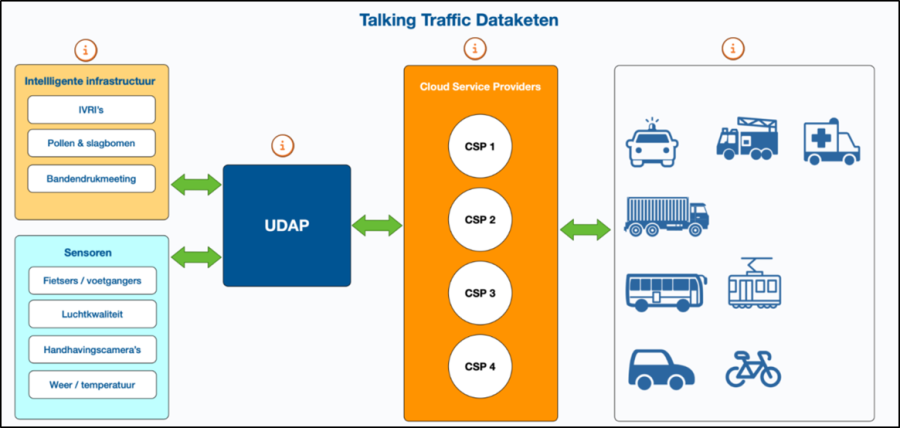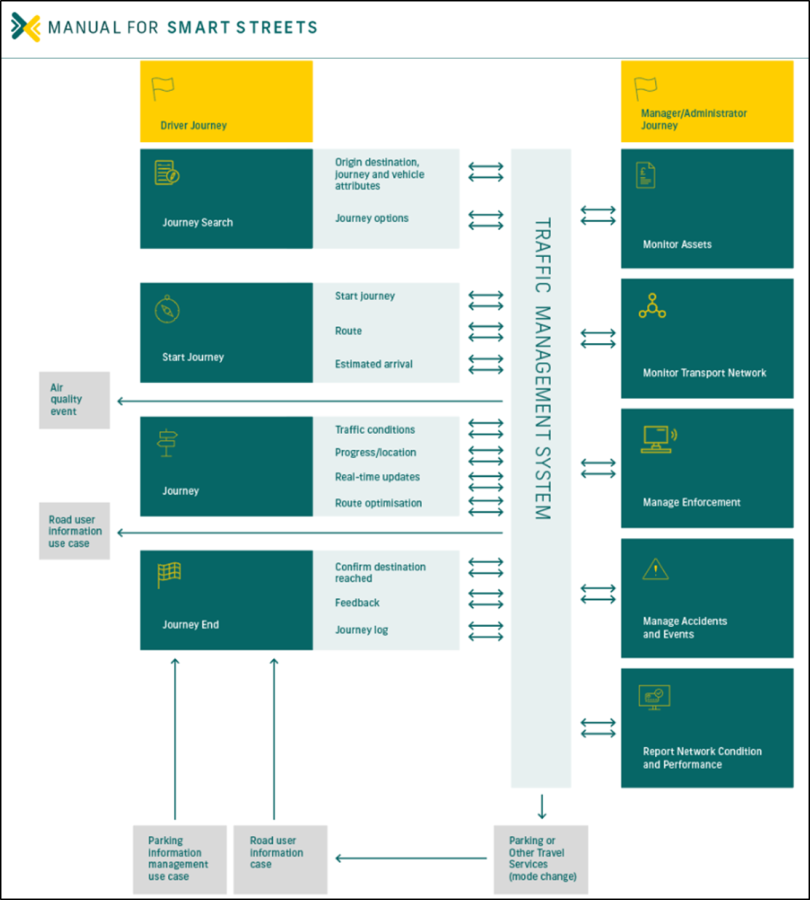
Image courtesy of ITS UK
What is the problem to be solved?
This toolkit covers smart traffic management and traffic signals and considers the wider traffic management across all roads in the UK and the application of a comprehensive Traffic management “system” beyond traffic signals and signs. The advisory toolkit considers the availability of data from a wider set of sources enabled by robust 5G connectivity.
Local Authorities managing roads implement measures to control and manage traffic, using connected technology to minimize congestion and improve safety. Smart traffic management systems integrate sensors, cameras, real-time data, and connected devices, which are mainly infrastructure based, to monitor traffic conditions, types of traffic and detect congestion. Informed decisions can then be made to control and manage traffic.
Traffic management involves the control of traffic flow in towns and cities to keep them moving efficiently, using regulation, enforcement and optimisation. Ineffective traffic management results in compromised road safety and congestion with knock on impact on journey times to car, transport and logistics operators.
What is the solution to the problem?
An Intelligent Traffic management system integrates various technologies to manage the road network. These components work together to create a cohesive system that enhances traffic management, reduces congestion, and improves road safety and include:
Hardware
- Sensors: cameras, radar, inductive loops that collect data on traffic flow, speed & vehicle types.
- Digital Signs: Variable Message Signs (VMS) and Vehicle-Activated Signs (VAS) provide real-time information to drivers.
- Traffic Signals: Adaptive traffic signals adjust timings based on real-time traffic conditions.
Software
- Traffic Management Software: Manages traffic flow, incident detection, and response.
- Data Analytics: Analyzes traffic data to optimize traffic management strategies.
- Control Systems: Software integrating various ITS components and manages operations.
- User Interfaces: Applications and dashboards to monitor and control the system.
Connectivity
- Communication Networks: Fibre, Wi-Fi, and cellular networks.
- Protocols: Standard communication protocols to ensure device and system interoperability.
- Cloud Services: Data storage, processing, and analytics.
Traffic Control Centres (local and regional)
- Servers: High-performance servers that process and store large volumes of data.
- Displays & workstations: Provide a comprehensive view of the traffic network.
- Backup Systems: Redundant systems to ensure continuous operation in case of failures.
Commercial model (Business Case)
Roads are the most used form of getting from one place to another for passengers in GB as shown below (How much people travel in Great Britain):
- in 2023, people travelled a total of 799 billion passenger kilometres
- 90% of all passenger kilometres travelled were by road (car, bus, active travel)
Benefits
Intelligent traffic management using a wider source of traffic and road user input data (sensors and vehicle data), collated and shared with traffic signals and other road users can offer the following benefits:
Qualitative Benefits
- Road safety and security
- Productivity due to predictable travel/commute time
- Traffic Management system efficiency
- Road user experience
Lessons Learnt
There are a number of organisation types working in the smart traffic management ecosystem:
- Sensor providers
- Traffic management software and system companies
- GPS system providers
- Data centre (cloud services) providers
- Mobile companies (mobile data, digital footprint information)
- Car manufacturers
If you’re ready to embark on a connectivity project, we can point you to the suppliers with expertise in your sector.






